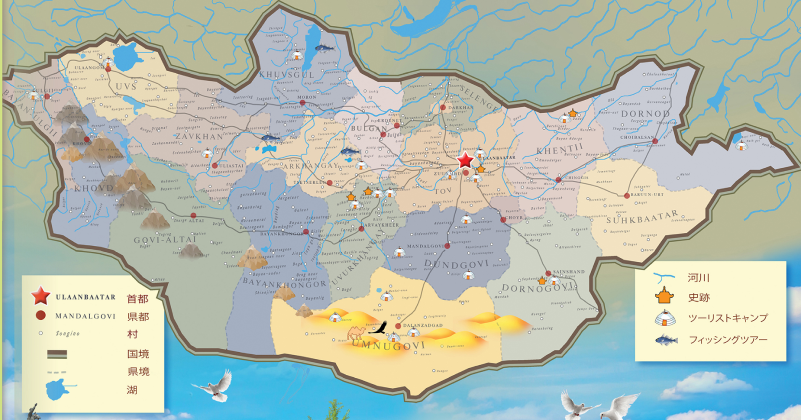
Temujin (Chinggis khaan) unified Mongolian nations and ruled the territory has extended to northwards Baikal lake, to southwards Great Wall, to westwards Irtysh river (nowadays Kazakhstan) , to eastwards Khalkha river (nowadays Mongolian eastern border). The Karakorum city was established in 1220 in Orkhon Valley by Chinggis khaan’s decree. It has been Mongol Empire’s center of administration, trade, craft and culture, besides that Karakorum was the crossroads of the Silk road, which was connecting East And West between 1220-1260.
During this period, Karakorum city has played the role of the world’s center , linking the world's culture and gathering places to Asian and European and Arabic travelers, officials, dignitaries and scientists. In Karakorum there were about 15 Buddist temples, Christian churches and Muslim mosques. World’s 3 major religions missionaries carried out their activities in Karakorum city. In 1254, Munkh Emperor invited these three religion’s delegates in Karakorum and they held the world's first theory debate of these 3 religions.
In 1234, Ugudei Emperor built the “Perfect Peace” palace as a symbol of Mongol Empire’s prosperity and dignity. In front of the “Perfect Peace” palace, there was a famous “Silver tree” fountain designed by French skilled artisan Guillaume Bouchier. French King Louis IX’s envoy William Rubruck reached in 1254 in Karakorum, and he described the silver tree in his travel report. According to the Rubruck report, there was an angel blowing a bugle on the top of the silver tree. The branches and leaves, fruits all were made of silver and on the foot of the tree there were 4 silver lions. When the banquet starts, the angel blows the bugle and 4 types of Mongolians favorite drinks, such as koumiss (fermented mare’s milk), wine, liquor, were run from the 4 lion’s mouth.
Many skilled workers from the United Kingdom, Hungary, Tibet, Nepal, Persia, China, Korea have contributed to construct and work the Karakorum’s architects. By the excavation of Karakorum city ruins, there were found Pharaoh's mask of Arabian coins, metal, leather goods, weapons, copper as well, such as transportation equipment, silver, and a number of archaeological findings. According to these findings, it can be seen that the metal working has developed successfully. Khubilai Emperor moved the capital city to Beijing in 1260. Then, the Ming dynasty’s army attacked the Karakorum in 1380 and in 1410. After these 2 attacks, Karakorum has completely collapsed.